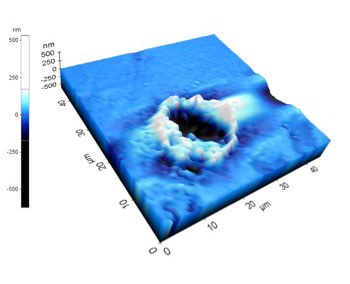BioSoft-Colloquium: "Using thermal interface effects in bioanalytical sensors"
Prof. Patrick Wagner
Katholieke Universiteit Leuven
Belgium

Using thermal interface effects in bioanalytical sensors
Practically all label-free biosensors are based on a limited number of readout techniques such as electronic field-effect devices, impedance spectroscopy, micromechanical resonators, nano-photonics, and surface-plasmon resonance. In 2012, we found unexpectedly a new label-free sensing principle based on a thermal current through a biologically functionalized solid-liquid interface.

First, we observed that molecular DNA brushes at this interface show a distinct increase of the heat-transfer resistance upon denaturation from the double- to the single-stranded state. This way, the DNA-melting temperature can be determined precisely using just two thermometers and a heat source. In turn, the melting temperature is closely linked to the absence or presence of point mutations. The ‘heat-transfer method HTM’, as the technique is called today, is actually very versatile: by using adapted chip coatings, HTM can be employed in the selective detection of cancer cells, in the detection of neurotransmitters (histamine, serotonin, etc.), and in protein recognition (peanut allergens).
Furthermore, HTM is sensitive for phase transitions in lipids and for the formation of ultrathin self-assembling monolayers. All effects are mainly empirical so far, while recent data suggest that frequency mismatches (phonons in the chip material, molecular vibrations in the liquid and bio-organic layer) may play a role in impeding the flow of a thermal current through these interfaces.
Kontakt
Simone Wiegand
Telefon: +49 2461 61-6654
Fax: +49 2461 61-2280
E-Mail: s.wiegand@fz-juelich.de
